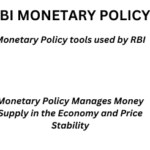MOU Between India Japan: Bilateral Relations

The Union Cabinet is apprised of a Memorandum of Understanding (MoU) signed between National Atmospheric Research Laboratory (NARL), Dept of Space, Government of India and Research Institute for Sustainable Humanosphere (RISH), Kyoto University, Kyoto, Japan for Academic and Research Cooperation and Exchange on November 4, 2020 and November 11, 2020 at respective institutes and exchanged by post.
Objectives
- This MoU shall enable NARL and RISH to continue their cooperation in areas of atmospheric science and technology, collaborative scientific experiments/campaigns and related modelling studies utilising the research facilities of RISH and NARL, exchange of scientific materials, publications and information, joint research meetings and workshops, exchange of faculty members, students and researchers.
- This MoU would lead to mutual utilization of facilities such as the Middle and Upper atmosphere (MU) radar in Shigaraki, Japan, the Equatorial Atmosphere Radar (EAR) in Kototabang, Indonesia and complementary instruments available from RISH, and the Mesosphere-Stratosphere-Troposphere (MST) radar and complementary instruments available at NARL.
Background
NARL and RISH have been collaborating in the area of atmospheric science and technology as well as exchange of scientists. This arrangement was formalised in 2008 through an MoU. The above MoU was renewed in the year 2013. A fresh MOU to promote collaborative research, as per the new guidelines, was signed in November 2020 by both sides and exchanged.
LEARNING FROM HOME/ WITHOUT CLASSES/ BASICS
INDO-JAPAN RELATIONS
Japan and India signed a peace treaty and established diplomatic relations on 28th April, 1952. This treaty was one of the first peace treaties Japan signed after World War II. Their relationship has gone beyond economics to enter the sphere of strategic cooperation.
There is synergy between the two in issues of bilateral regional and global importance; convergence on strategic matters; and its significance is growing from the common outlook on issues of peace, security and stability of the Indo-Pacific Region and their commitment to multilateralism.
Ever since the establishment of diplomatic relations, the two countries have enjoyed cordial relations. Annual Summits between the Prime Ministers commencing 2006 when both sides established ‘Strategic and Global Partnership’.in 2014 upgraded bilateral relations to ‘Special Strategic and Global Partnership’
- India decided to introduce the Shinkansen system in December 2015, when Prime Minister Abe visited India. The Japan’s Shinkansen system is in a highest class of High-Speed Railway systems around the world in terms of its safety and accuracy
- Japan’s resistance to recognising India as a nuclear power, still the two nations finally decided to sign the civil nuclear pact in 2016.
- In the Indo–Pacific region as well and Japan joining as the third partner in the Malabar exercises, along with India and the US, highlights the strong bonding.
- The Japan-India Digital Partnership launched in October 2018 between the Ministry of Economy, Trade and Industry and India’s Ministry of Electronics and Information Technology. Under the partnership, Japan and India agreed to establish a startup hub in Bengaluru, and to cooperate in cybersecurity and the dissemination of next-generation networks
- In November 2019, Japan and India held their first “2 plus 2” meeting of foreign and defense ministers.
- Undertaking joint projects in India’s Northeast and wider South Asia to the revival of Quad in 2017 and joint connectivity projects such as the Asia Africa Growth Corridor.
- In 2020 India and Japan concluded their Acquisition and Cross-Servicing Agreement (ACSA) simplify the processes involved in using each other’s facilities. The India-Japan ACSA would provide the two militaries with access to each other’s military facilities for repair and replenishment of provisions as well as overall improve the scope and sophistication of military-to-military cooperation
- India has been the largest recipient of Japanese ODA Loan for the past decades. Delhi Metro is one of the most successful examples of Japanese cooperation through the utilization of ODA. Japan continues to cooperate in supporting strategic connectivity linking South Asia to Southeast Asia through the synergy between ”Act East” policy and ”Partnership for Quality Infrastructure.”



0 Comments